Coloring a superhero coloring page, making a chalk racetrack on the driveway, or having a white board drawing competition can all be ways for your child to practice their grasp. As your child grows, the grasp they use on their writing utensil will change and can be a sign of their evolving fine motor skills. By the approximate ages listed, your child should be demonstrating these types of grasp on their writing utensil.
Category Archives: Occupational Therapy
Righty Tighty, Lefty Mighty
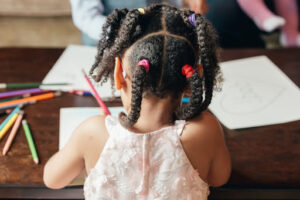
What is Hand Dominance?
Children should be able to use both hands in play. However, as tasks become increasingly complex, almost all children develop one hand that they use automatically to act on other objects. Hand dominance is not a preference, but a developmental process that allows the brain to advance their skills.
Tips for a Sensory-Friendly Halloween
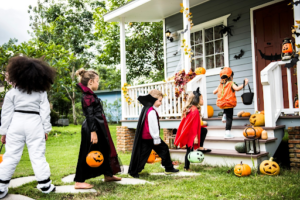
Halloween is right around the corner and while it is a highly anticipated event for many children, it can be a challenging time for those with sensory processing differences. With the wide array of sounds, sights and textures, Halloween is a sensory-rich holiday that can be overwhelming. But, with a bit of planning and consideration of each child’s unique strengths and needs, families can enjoy the festivities while navigating the many sensory experiences that Halloween brings!
Visual Perceptual Skills
Your child’s Visual perceptual skills are an important set of skills that help them understand the world around them. So, what are visual perceptual skills? Visual perceptual skills are the ability to visually take in information and interpret that information to give it a meaning. There are seven different skills that make up visual perceptual skills. They are the the following:
Visual discrimination
Determining differences/ similarities between
objects such as size, shape, color, etc.
Visual sequential memory
The ability to recall visual sequences/
patterns
Form constancy
Identifying that an object is the same object regardless of its orientation, size, color, etc.
Visual closure
Identifying an object or person even if you can’t see the entire picture.
Visual memory
The ability to recognize visual traits of an object.
Visual spatial relations
Determining the relationships between the objects in your environment.
Visual figure ground
The ability to locate an object in a
visually busy environment.
Questions or concerns?
If you have questions or concerns about your child’s visual perceptual skills, please contact us at info@playworkschicago.com or 773-332-9439.
Urooba Khaleelullah, MOT, OTR/L
Occupational Therapist
When Their Storm Meets Our Calm: The Art of Co-Regulation
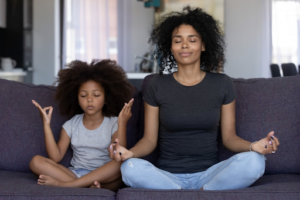
Has your cheerful child ever quickly become a ball of tears when a near-by peer begins crying? Have you ever lost the pep in your step after spending time around a grumpy co-worker? This is because the feelings and behaviors of people in close proximity to us, directly impact how we feel, and respond to our own emotions. In the same way adults are impacted by others actions, children pick up the moods of others around them. However, being able to regulate emotions effectively and efficiently is not an innate skill. A child’s capacity to manage their big emotions relies on their brain development and their experiences. Therefore, when feeling upset or overwhelmed children look to their caregivers for help with regulating their emotions and appropriately respond to external stressors. Read More ›
Summer Sun Sensory Fun
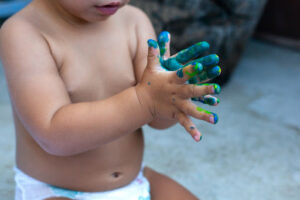
It’s officially summertime in the Chi and we couldn’t be more excited! This perfect weather is practically begging our little ones to go outside and play. These fun, summer sensory rich activities are wonderful ways to engage our children’s tactile system and expose them to different scents, textures, and sensations.
Neurodiversity Means Natural Variety in the Human Brain

In recent years, it has become more recognized that a shift in societal perspectives is necessary for true inclusion, specifically regarding (but not limited to) autism and ADHD. Historically, autism and ADHD have been pathologized to focus on the way areas for growth impair a person’s “normalness”, rather than the constructive ways that individuals use their unique strengths. Neurodiverse children and adults do experience difficulties related to living in a world that is not accommodating and understanding of differences. The neurodiversity movement does not seek to trivialize how challenging growing up neurodiverse can be, but rather help focus on building shared understanding of the value neurodiverse individuals have just as they are.
It’s Reflexive! Retained Reflexes and Their Effect on Development
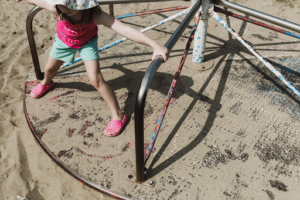
Retained primitive reflexes are immature movement patterns that can often have effects on a child’s overall development. Naturally, these reflexes should “integrate” or disappear during infancy. When a reflex is retained, more mature movement patterns are not developed, which can have an effect on sensory integration, posture, executive functioning skills, and overall neuroplasticity. Recognizing and treating these retained reflexes can have a big impact on a child’s overall development.
Spring Sensory Bins
With April showers comes May flowers, mud and gardening! As the weather becomes warmer and our time outside increases, here are a few sensory bin ideas that can target your child’s need for exploration and keep all their senses alert! Sensory bins are a great way to introduce your child to new sensory experiences from smells to various textures.
Sensory-Friendly Outings in the Chicagoland Area
With summer right around the corner, it’s time to start thinking about fun outings for the family! Luckily, Chicago boasts an array of options that are mindful of children’s individual sensory needs.
